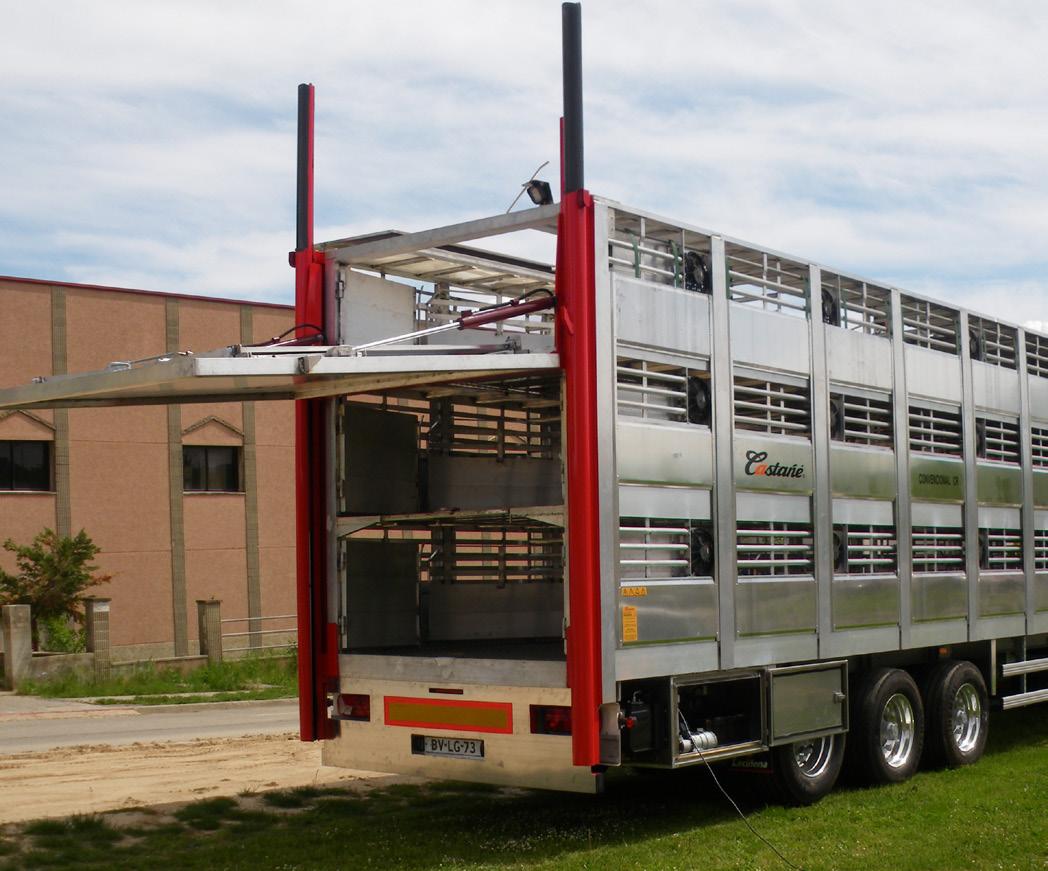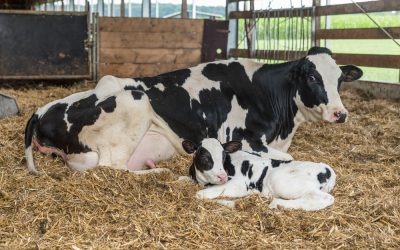E. Mainau, D. Temple, X. Manteca
More information
Download PDF Technical document
Despite being a relatively short phase in the process of meat production, the transport of animals to slaughter can cause major economic losses. This is because during transport the animals are exposed to a variety of stressors in a short period of time. Stress has negative effects on carcass and meat quality, and in extreme cases can result in the death of the animals. The poorer the welfare of the animals is during transport, the greater the economic losses will be.
STRESS-INDUCED DEATHS DURING TRANSPORT
Mortality is a clear indicator of extreme lack of welfare during transport. In Europe, between 0.03% and 0.5% of pigs die during transports of less than 8 h. About 70% of the deaths occur in the truck, while the remaining 30% occur during unloading. In Canada, as much as 0.08% of pigs were reported to be dead on arrival each year.
Pig mortality rate in transit is significantly affected by loading density as well as by truck design and by how pigs are handled during loading and unloading. Under commercial conditions in Spain, it was found that transporting pigs at space allowances greater than 0.40m2 / 100kg increased the mortality rate from 0.04% to 0.77%. The design of the vehicle and the way pigs are handled have an important effect of deaths on arrival, especially on deaths that are related to thermal stress and pig fatigue. For example, trucks with hydraulic lifts, good insulation, forced ventilation and water sprinkling that increase evaporative cooling during summer can reduce stress during transport. Training of personnel in pig handling during loading and unloading can drastically improve pig welfare and economic performances.

Transport vehicle with hydraulic ramp and forced ventilation
One of the most important causes of mortality during transport is the so-called malignant hyperthermia (or “Pig Stress Syndrome”). Malignant hyperthermia is caused by a combination of environmental factors and the genotype of the animals. Such environmental factors include stress, physical exercise and high effective temperature. Stress and forced, intense exercise can cause an increase in body temperature, cardiac arrest and death. Affected animals have very apparent signs of dyspnea (difficult breathing), cyanosis (bluish discolouration of skin due to circulatory problems), and hyperthermia (increased body temperature), and can develop muscle rigor before death. The effective temperature during transport has a major effect on mortality. Effective temperature depends, among other factors, on ambient temperature, humidity and ventilation. For example, it is suggested that the ambient temperature inside the vehicle should not exceed 30ºC. Likewise, when the temperature in the vehicle exceeds 25 º C, the combination of forced ventilation with water sprinkling can significantly reduce deaths.
Genetics has also a significant effect on mortality and several studies have shown that reducing the frequency of the halothane gene can reduce losses during transport. The halothane gene encodes a muscle protein, the ryanodine receptor, which is involved in the control of calcium transport from the sarcoplasmic reticulum into the cytoplasm of muscle cells. Halothane gene carriers show prolonged muscle contractions when forced to exercise, and these contractions can cause hyperthermia. For this reason, the pigs carrying the halothane gene have a higher risk of developing Porcine Stress Syndrome.
DISEASE TRANSMISSION
Stress during transport increases the susceptibility of animals to infections. The release of glucocorticoids and / or catecholamines in response to a stressful situation reduces the efficiency of the immune response, thereby increasing the likelihood of infection. Furthermore, stress increases the emission of pathogens from animals that are sub-clinical carriers. For example, stress increases the excretion of intestinal pathogens and, consequently, increases the prevalence of Salmonella spp. carriers.
INJURIES AND CARCASS CONDEMNATION
njuries caused during transport may result from fights between animals, poor design of the truck or inappropriate densities. The lesions on the skin caused by fights between the animals are related to the incidence of DFD meat (see below) and with an increased concentration of plasma cortisol (which is indicative of stress) and CPK or creatine phosphokinase, which is an enzyme indicator of muscle damage. Mixing animals can be avoided if the size of the truck compartments is adjustable. Very high densities (
MEAT QUALITY
PSE and DFD meats are the two main alterations in meat quality. Both conditions are related to the pH of the meat and to the content of muscle glycogen – which will eventually be transformed into lactic acid at the time of slaughter.
PSE (Pale, Soft, Exudative) meats are characterized by a decrease of pH faster than normal. When an intense stress response occurs immediately before slaughter – for example, during unloading, rough handling, or mixing of unfamiliar pigs in lairage – the production of lactic acid is too fast, resulting in an abnormally low pH when meat temperature is still high. Denaturation of proteins is then excessive, resulting in soft and pale meats with an excessive exudation. PSE meats have less value and, in extreme cases, should be discarded.
DFD (Dark, Firm, Dry) meats are characterized by a final pH higher than expected. DFD meats appear when animals suffer prolonged stress or have gone through long and intense exercise before slaughter. Prolonged fasting as well as rough driving and fights caused by mixing are the main factors involved in the occurrence of DFD meats. When stress is prolonged for many hours, glycogen reserves are depleted before slaughter, and lactic acid production and post-mortem acidification are insufficient. DFD meats, as the name suggests, are darker and drier than normal, and are less tasty. In addition, DFD meats are more prone to bacterial contamination.
“THE DESIGN OF THE TRUCK AND THE HANDLING OF THE ANIMALS ARE TWO KEY FACTORS TO MINIMIZE DEATHS DURING TRANSPORT”
SUMMARY
Deaths-on-arrival are a clear indicator of extreme lack of welfare during transport. One of the most important causes of death during transport is the “Porcine Stress Syndrome”. Truck design and the handling of animals have an important effect on the welfare of animals during transport. Stress during transport increases the prevalence of some diseases such as Salmonellosis. Skin lesions, bruises and deep wounds caused by transport result in carcass condemnations, whereas PSE and DFD meats indicate an inadequate handling of the animals and cause significant economic losses.
- REFERENCES
- Appleby MC, Cussen V, Garcés L, Lambert LA, Turner J, 2008. Long distance transport and welfare of farm animals. CABI Head Office.
- EFSA 2011. Scientific opinion concerning the welfare of animals during transport. The EFSA Journal 9 (1) : 1966.
- Faucitano L and Schaefer AL 2008. Welfare of pigs: from birth to slaughter. Wageningen Academic Publishers.
- Lambooij E 2007. Transport of Pigs. In: Livestock Handling and Transport, Grandin, T. CAB International. p.228-243.
- Schwartzkopf-Genswein KS, Faucitano L, Dadgar S, Shand P, González LA, Crowe TG, 2012. Road transport of cattle, swine and poultry in North America and its impact on animal welfare, carcass and meat quality: A review. Meat science, 92: 227-243.



